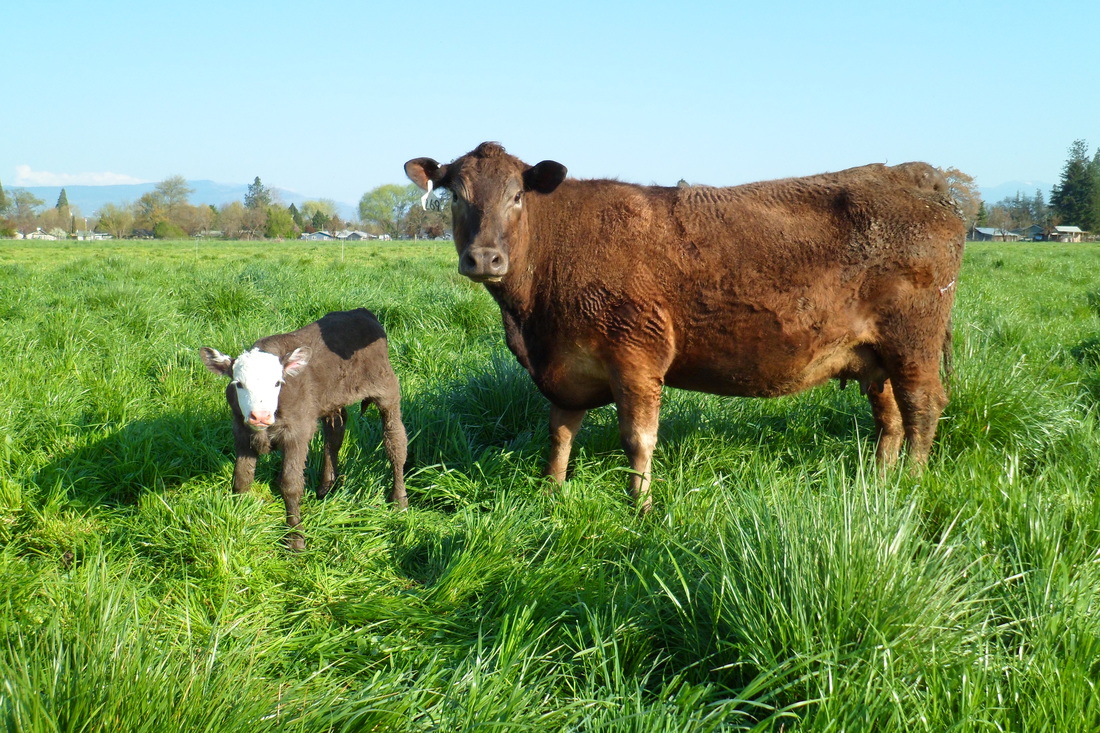It’s been a month now since we started calving and we have 35 calves on the ground with only six cows left to calve. All of the calves born so far are AI (artificial insemination) sired. I went to an AI school in Missouri just a year or so after college and have been breeding cows for over 30 years. The bull with the most calves this year is Harland, a Hereford bull that is pictured on the Cows and Calves page. I have been using Harland in our herd for several years. His first calves on our ranch were born in 2011. Since most of our cows are of Angus-based breeding, when crossed with a Hereford, the calves have a lot of hybrid vigor which contributes to healthy, fast growing calves. I have found Harland’s calves to finish well on grass while yielding good sized, meaty carcasses. He is the sire of #269’s calf, which is why our calf has a white face.
|
With the encouragement of my three daughters, I’ve decided to start a blog. I will focus this year on writing about the life cycle of one calf here at Martin Family Ranch. My plan is to post monthly photos of the calf as the year progresses. For those of you who are familiar with cattle production, this will be nothing new. But for many of you who don’t have close ties to farm life, I’m hoping this will be an interesting and enlightening description of what is involved in producing grass-fed beef. This is Cow #269 and her newborn calf. This is the second calf born to #269, who is the youngest daughter of #868, named Moon, the brown cow that is in the right corner of our website banner. Moon is no longer in our herd, but was the longest producing cow ever, here at Martin Family Ranch. Moon was born in 1998 in Iowa and was included in the dozen cows and heifers that were trucked to Oregon in 2002 to populate our herd here. She produced a calf every year of her life starting at two years of age, for a total number of calves produced of 15.
#269 gave birth to her calf on April 2. Typically, the birthing process takes about an hour or so. A cow will usually exhibit some signs of restlessness prior to calving and then separate herself from the herd. Within an hour of birth, the baby calf has typically gotten up and nursed. It is critical to the health of the newborn calf that it nurse in the first 12 to 24 hours, as the cow’s first milk, called colostrum, is full of antibodies that boost the calf’s immune system. This first picture was taken in the late afternoon, about 8 hours after the calf was born. As is mentioned elsewhere on our website, we welcome visitors to the ranch and would love to show you what is involved in producing our beef. |
Archives
August 2018
Categories |

 RSS Feed
RSS Feed